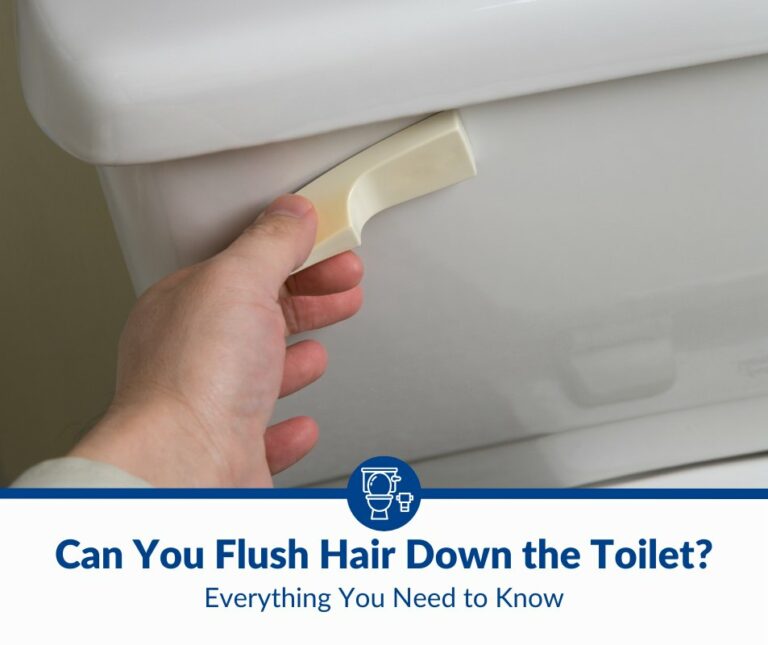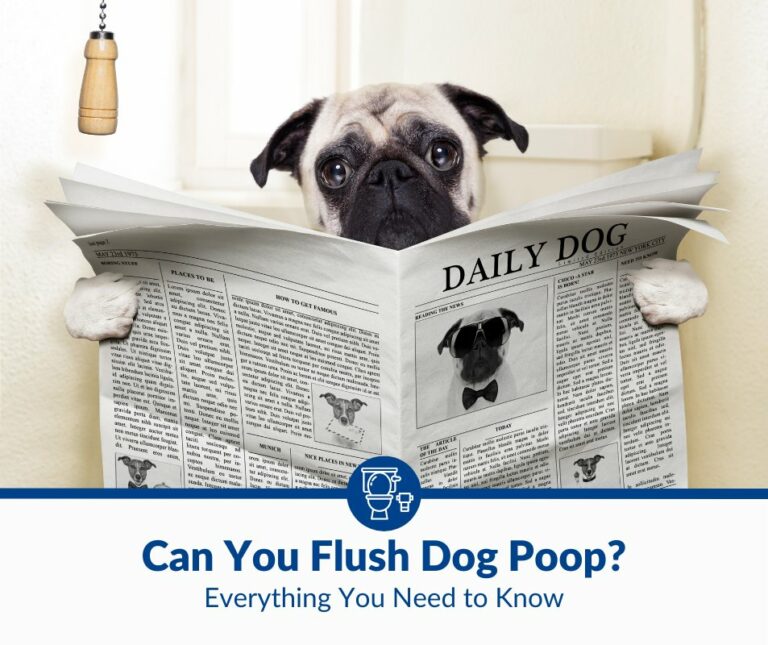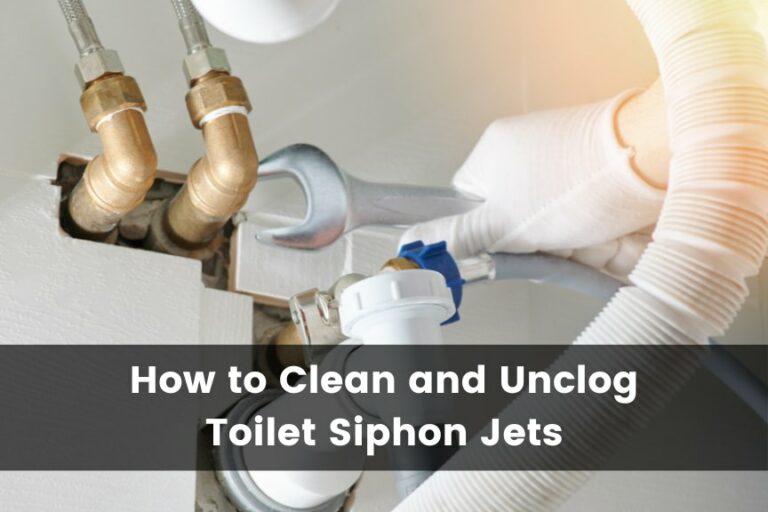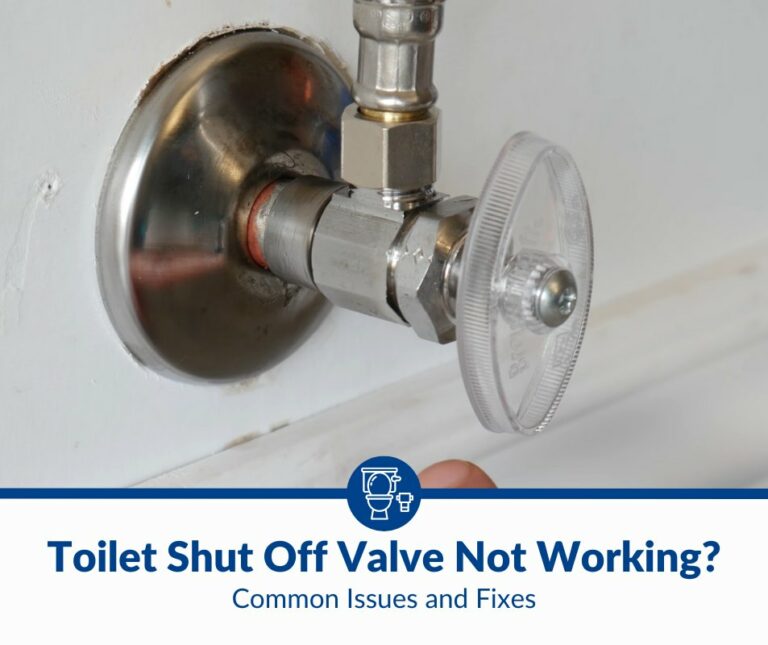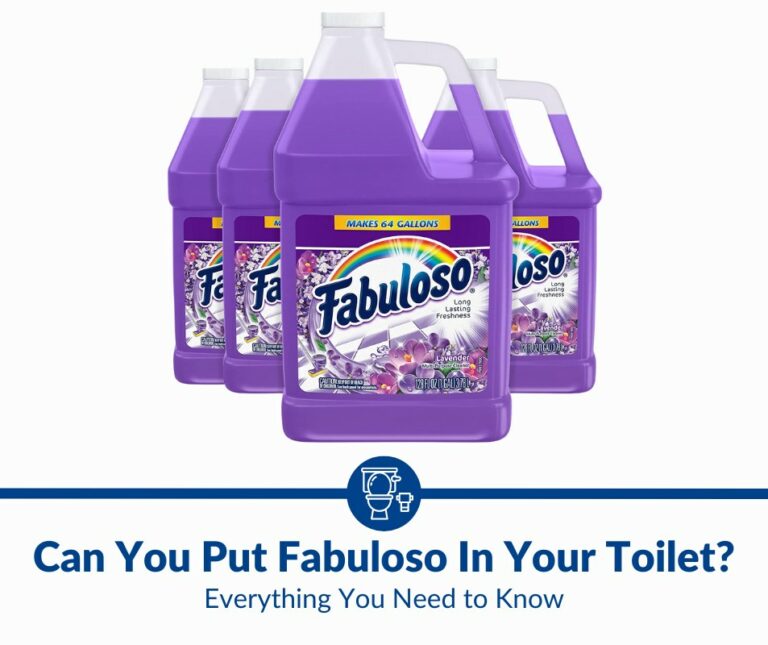Is Drain Cleaner Safe for Toilets?
Most drain cleaners use chemicals to break down and dissolve different types of waste stuck in the pipes of kitchen sinks, bathroom washbasins, bathtubs, and showers. So, can you use drain cleaner on toilets? Whether or not you can depends on if a drain cleaner is safe for toilets.
Standard drain cleaners made of abrasive, caustic, and toxic chemicals aren’t safe for toilets. These chemicals can damage toilet bowls, drains, pipes, and wax rings. Drain cleaners are also a health hazard if you get exposed to chemical fumes, splashing, etc.
Pouring a bit of drain cleaner into a toilet to clear a clog may appear a rational and safe option if you are accustomed to using one for your bathroom pipes and kitchen sinks. However, chemical drain cleaners aren’t made for toilets. Read on to know why a drain cleaner is unsafe for toilets.
Risks of Using Drain Cleaner for Toilets
Most of the popular drain cleaners, such as Drano and Liquid Plumr, are specifically formulated to clean and clear the following types of materials clogging a pipe:
- Food
- Grease
- Gunk
- Hair
- Oils
- Scum
These common drain cleaners, including the different forms or versions, are not really effective in cleaning the following materials that can clog your toilet:
- Baby wipes
- Hygiene products
- Toys, hard objects, etc.
Furthermore, chemical drain cleaners are intended to work in standard plumbing systems where the pipes have a typical u-trap. You will find this u-trap in the drain pipes of the following fixtures:
- Kitchen sink
- Shower/bathtub
- Washbasin
Whenever these drain pipes are clogged, fully or partially, the blockage tends to be at the u-trap. A toilet doesn’t have this u-trap. Instead, most toilets have a p-trap or s-trap. These traps aren’t
necessarily the site of the blockage when a toilet clogs in most cases.
Therefore, most common chemical drain cleaners don’t work as intended in a toilet with a clogged pipe and standing water in the bowl. This paves the way for a few probable fallouts that are harmful to the toilet and hazardous to your health.
A Chemical Drain Cleaner May Damage Standard Toilets
Chemical drain cleaners can damage one or more components of a standard toilet, such as the following:
- Drain pipe
- Toilet bowl
- Wax ring
Pouring a lot of drain cleaner to clear a severe clog and having an enormous buildup inside a toilet’s pipe may cause significant damage. The fittings or the entire toilet may be irreparable and unusable as a result.
A Chemical Drain Cleaner May Corrode a Toilet’s Pipe
You may wonder why a drain cleaner can potentially damage a toilet’s pipe if it doesn’t harm the pipes of kitchen sinks, shower or bathtub drains, and washbasins. Besides, most drain cleaners are labeled as safe for different pipes, including but not limited to the following materials:
- Metal
- PVC
- Steel
The risk of damage is due to the buildup of chemical drain cleaners in the toilet’s trap and pipe. Unlike a bathroom or kitchen sink, chemical drain cleaners don’t have a straight path downward, facilitated by gravity, due to the p-trap or s-trap in a toilet. So, the chemicals linger in the trap.
Even if a bit of a chemical drain cleaner mixes with the water and finds its way down the pipe or to the clogged part, there will still be a substantial buildup of the caustic and toxic compounds in the bowl and trap of your toilet. The flange part of the drain pipe will also have a buildup.
If there is no blockage in these small segments of your toilet and its drain pipe, the chemicals do not break or dissolve any waste. Instead, the chemicals will slowly corrode metals like copper or iron and soften plastics such as PVC.
Hence, a standard chemical drain cleaner will damage your toilet’s drain pipe. If a particular pipe is already old or in poor condition, it may encounter greater material or structural damage. You might have a leaking or even a ruptured pipe, which will complicate and worsen your problem.
A Drain Cleaner May Crack or Damage the Toilet Bowl
Most toilet bowls are made of porcelain. The quality of porcelain used for toilet bowls is usually resistant to most chemicals that you are likely to have in your house, including the following:
- Acids
- Alkalis
- Salts
Porcelain isn’t resistant to hydrofluoric acid, but household drain cleaners don’t comprise this chemical or hydrogen fluoride. That said, the common chemicals used in drain cleaners pose more than one risk to your toilet bowl.
First, the abrasive and caustic chemicals in a typical drain cleaner can cause a bit of damage to the glazing of your porcelain toilet bowl. You may find some etching, too. The adverse effect will likely appear cosmetic in moderate cases. However, there is also a risk of structural damage.
The second adverse effect is a potential crack or more significant damage to the porcelain bowl. Almost all drain cleaners generate substantial heat due to the chemical reactions, including the following ingredients found in the likes of Drano and Liquid Plumr:
The standard p-trap or s-trap of a toilet and the other segments, such as the flange or the pipe’s bore, are confined spaces with little to no room for any material’s expansion, especially when a plumbing system is already clogged. The chemical reactions and heat can crack the porcelain.
Chemical drain cleaners are supposed to work quickly and only on the blockage. Since a toilet is unlikely to have a blockage in the trap or the opening of the pipe connected to the flange, the chemicals won’t work on any waste. All reactions and heat will impact the toilet bowl, pipe, etc.
Chemical Drain Cleaners Might Damage the Wax Ring
Like the toilet bowl and pipe, chemical drain cleaners might damage the wax ring. Many toilets have a wax ring for the closet flange. This wax ring isn’t resistant to a lot of chemicals, including those found in drain cleaners meant for other drains and sink pipes.
Similarly, PVC pipes for toilet drains may have glue connecting different segments. These glues aren’t invincible to chemicals that aren’t supposed to be flushed down a toilet. Therefore, a drain cleaner can potentially damage these connectors and the wax ring, which might create a mess.
Chemical Drain Cleaners Are a Health Hazard in a Toilet
Most drain cleaners have toxic chemicals, so they are hazardous irrespective of where you use them. However, the products are more hazardous in a toilet. Here are the main reasons why the chemicals in a drain cleaner are riskier to use for clogged toilets:
- A toilet drain pipe is larger than those used for sinks and showers, 3 inches to 4 inches (7.62 cm to 10.16 cm) compared to 1.5 inches to 2 inches (3.81 cm to 5.08 cm). So, you may have to use a lot more drain cleaner to clear a clogged toilet pipe.
- Using a greater quantity of drain cleaner will likely expose you to more toxic chemicals. Also, there’s an increased risk of spilling and splashing, especially since the chemicals in drain cleaners are supposed to work on a clog quickly without a buildup.
- The lingering chemicals in the bowl and trap may lead to a substantial buildup of a drain cleaner, which increases the intensity of potential exposure. Of course, a pair of safety glasses, gloves, and respirators may mitigate the risks to a reasonable extent.
Let me highlight some of the health risks a chemical drain cleaner poses when you use it in a toilet.
A Chemical Drain Cleaner Can Emit Toxic Gasses or Fumes
The Drano Professional Strength Foamer Clog Remover contains the following chemicals:
- Hydrogen peroxide
- Sodium chloride
- Sodium hypochlorite
Bleach or sodium hypochlorite and sodium chloride can emit chlorine and other fumes when you use such a drain cleaner in your toilet. Inhaling chlorine gas is toxic, with many adverse effects on your health.
Inhaling the fumes or gasses of drain cleaners like Drano’s Professional Strength Foamer Clog Remover may irritate the respiratory tract. Exhaust fans in bathrooms may ventilate the space to an extent, but toilets don’t have large windows like kitchens. So, some mist or vapor may linger.
Drano recommends using its products in spaces that have adequate ventilation. Also, thermal decomposition of drain cleaners in a toilet bowl, trap, or pipe will probably release more of the irritating fumes, gasses, or vapors.
Many Chemicals in Drain Cleaners Are Eye and Skin Irritants
All chemical drain cleaners are eye and skin irritants, including the likes of Drano Max Gel Clog Remover. Such drain cleaners can burn your skin and damage your eyes. Of course, you must always use a drain cleaner safely and as instructed, but toilets pose a few distinct challenges.
The fact that drain cleaners may not work effectively to clear a clogged toilet implies that you will need some kind of intervention to fix the problem. Such interventions can increase your risks of exposure to the chemicals, including eye and skin contact.
Most Drain Cleaners Will Likely Worsen a Clogged Toilet
Suppose you use a drain cleaner despite considering all the potential risks, and the chemicals don’t work as you expect. In such a scenario, you will have an already clogged toilet with some hazardous chemicals in the bowl and trap. If you intervene, you will likely worsen the crisis.
Drain Cleaners Have Hazardous Reactions With Other Chemicals
You cannot add any other chemical or cleaning agent after you use a drain cleaner in a toilet. All chemical drain cleaners can react hazardously with the following substances:
- Acids
- Ammonia
- Toilet cleaners
You can’t even use baking soda and vinegar in a toilet loaded with a drain cleaner because they will react, forming bubbles and scum. As a result, you might have the drain cleaner solution rise up the bowl or splash. A necessary flush can also cause splashing if the toilet stays clogged.
Furthermore, you have to be extremely careful while flushing a toilet after using a drain cleaner in it to clear a clog. If there’s sufficient drain cleaner in the toilet bowl or trap, a few chemicals can cause eruptions and splashing. One example is sodium hydroxide.
Both Drano and Liquid Plumr drain cleaners have sodium hydroxide, which can generate heat in an aqueous solution or when diluted in water, i.e., flushing. This heat and reaction may lead to eruptions inside the toilet bowl. So, flushing has the likelihood of splashing a drain cleaner.
Mechanical Interventions May Cause Splashing of Drain Cleaners
Flushing a clogged toilet is risky. If the toilet bowl and trap have the chemicals of a typical drain cleaner, flushing is a hazardous proposition. The potential spillage and toxic fumes will definitely be unhealthy for you and others near the bathroom. And other cleaning agents are a nonstarter.
Hence, the only option you may have for a clogged toilet loaded with a chemical drain cleaner is to use an auger or plunger. A plunger may not worsen chemical reactions, but the mechanical intervention of suction and thrust can splash the drain cleaner inside and over the bowl.
You don’t want to risk contacting a chemical drain cleaner, even if you put on protective gear. If you use a toilet auger, it may not cause as much splashing as a plunger, but there is still a risk of exposure to the chemicals because you will be quite close to the toilet bowl and trap.
Besides, if you have to use a plunger or toilet auger, you might as well use such a tool instead of experimenting with a drain cleaner to clear a clogged pipe. Some blockages, such as a hard object or toy, will anyway require a mechanical tool, like an auger, to unclog a toilet.
Overflowing Toilets With Drain Cleaners Is a Serious Health Risk
A clogged toilet can overflow if the backup is severe. Flushing before clearing the clog is not an option. Plus, flushing a toilet with drain cleaner inside it without knowing whether or not the clog has been cleared is riskier and potentially hazardous. You can’t combine other cleaners, either.
Whichever way you look at it, including using a plunger that can splash wastewater with a drain cleaner on and around you, there is no way you can risk overflowing a toilet that has residual or a significant buildup of chemicals.
Toxic Cleaners Can Alter the Microbiome of Septic Tanks
Drain cleaners contain toxic chemicals, which shouldn’t be introduced into a septic tank. Every septic tank system develops a natural microbiome over time. This anaerobic environment has many bacteria and other microorganisms that break down and the waste from all your toilets.
If you live in a city and your toilets are connected to the sewer system, this particular problem is not relevant, albeit you should still avoid using a drain cleaner for clogged toilets. For any house with a septic tank, the chemicals in a drain cleaner can kill the bacteria that process solid waste.
Therefore, your septic tank system may not function as effectively and efficiently as it does in a normal scenario. If you routinely use a drain cleaner, you may have an overloaded septic tank in a while, and the altered microbiome in the system won’t decompose the piling waste efficiently.
Can You Use Drain Cleaner on Toilets?
You shouldn’t use a standard drain cleaner on toilets unless you are absolutely sure that the product won’t harm the bowl, trap, or pipe. Additionally, you must exercise utmost caution to prevent splashing. Don’t use a chemical drain cleaner frequently or regularly in a toilet.
Unlike drain cleaners, you can use a buildup remover to keep a toilet unclogged. All Drano drain cleaners are unsafe and unsuitable for toilets. However, the Drano Max Build-Up Remover (available on Amazon.com) is an exception.
Unlike its drain cleaners comprising mostly toxic chemicals, the Drano Max Build-Up Remover has bacteria and natural enzymes to break down and dissolve most waste stuck in pipes of the following fixtures:
- Bathroom drain
- Bathtub/shower
- Garbage disposal
- Kitchen sink
- Toilet
- Washbasin
However, Drano’s Max Build-Up Remover isn’t a substitute for a drain cleaner to clear or open a blockage. This product works as a proactive solution to prevent a toilet from clogging when used regularly. Also, the solution takes 6~8 hours or overnight to work, unlike Drano’s drain cleaners.
Many drain cleaners meant for kitchen sinks and bathrooms work as quickly as 15 minutes. But a cleaner designed to clear a clogged toilet takes longer. While Drano’s Max Build-Up Remover doesn’t open a clogged toilet pipe, enzyme drain cleaners can do so, albeit they take hours or overnight.
Therefore, you should either get a flange plunger that works better than a standard one or use a toilet auger to clear a clogged drain pipe. You can use an enzyme drain cleaner or a homemade solution, such as baking soda with vinegar or soap and warm water.
Don’t combine any of these solutions with a chemical drain cleaner to clear a clogged toilet for the reasons I have explained above.
Conclusion
A typical drain cleaner comprising caustic and toxic chemicals isn’t safe for toilets. Besides, the blockage may not be limited to one place or be anywhere near the bowl and trap, so standard drain cleaners may be completely ineffective.


